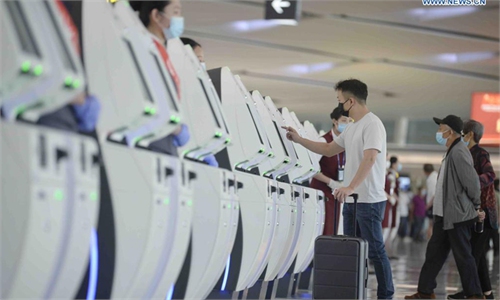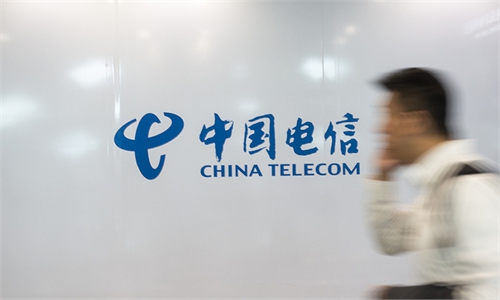
5G base stations are seen at the National Alpine Ski Center in the Yanqing competition area for the Beijing 2022 Olympic and Paralympic Winter Games on December 14, 2021. Photo: Shen Weiduo/ GT
From broadcasting services and real-time weather forecasts, to timing and scoring during events, as well as transportation and medical services, China's 5G technology has been adopted in numerous aspects of the ongoing Beijing 2022 Winter Olympic Games, which is said to be the first ever Winter Olympics with full 5G coverage.
"I think that one of the biggest highlights of high technologies during the Games is the full coverage of 5G signals. Using this breakthrough, we have 19 innovative application scenarios, making the event a real smart one," Wang Chuanbao, deputy general manager of China Unicom Beijing, told the Global Times in a recent interview.
China Unicom, one of the biggest telecom firms in China, is the official telecommunication services partner for the Beijing 2022 Winter Olympic Games.
The most tangible 5G technology at the Beijing Games is the 5G cloud-based broadcast technology, which has come to enable people to enjoy the event synchronously, anytime and anywhere, as the COVID-19 kept would-be audience outside of the stadium.
Compared with traditional broadcasting that is mainly based on on-site production, the essence of cloud-based broadcasting is concentrated in a 5G backpack about the size of a schoolbag, which is able to follow the footsteps of on-camera reporters and collect on-site scenes, achieving real-time transmission, Wang said.
In terms of medical services, the 5G smart ambulance used at the Beijing Games looks no different from ordinary ambulances, but in addition to common medical equipment such as monitors, electrocardiographs and defibrillators, it has data collection equipment such as cameras and emergency gateways.
Medical staff on the ambulance can transmit relevant data and information to the emergency center via the 5G emergency gateway, realizing real-time data exchange and sharing, according to Wang.
With 5G technologies, the Beijing-Zhangjiakou High-speed Railway, the world's first smart high-speed rail fully covered by 5G network, can realize livestreaming ultra-high-definition videos from a bullet train moving at 350 kilometers per hour.
"All the innovative applications are actually active exploration in 'no man's land'. They were initially aimed at ensuring the Winter Olympics' smooth operations. But I think all of the Olympic legacies will be applied in people's daily lives in the future," Wang said.
Behind the advanced technologies and innovative applications is China's steadfast development in mobile communication over the years that have seen the country rise from near zero advantage in the era of 1G to a leading role in 5G.
As of the end of 2021, China had more than 1.425 million 5G base stations amid the country's efforts to expand its 5G network coverage, taking up more than 60 percent of the world's total, data from the Ministry of Industry and Information Technology showed.
China expects to see the number of 5G users exceed 560 million by 2023, according to an official guideline released in July 2021. By then, the 5G network is expected to be used by over 40 percent of personal mobile phone users, and every 10,000 people in China will enjoy more than 18 5G base stations, the guideline said.




